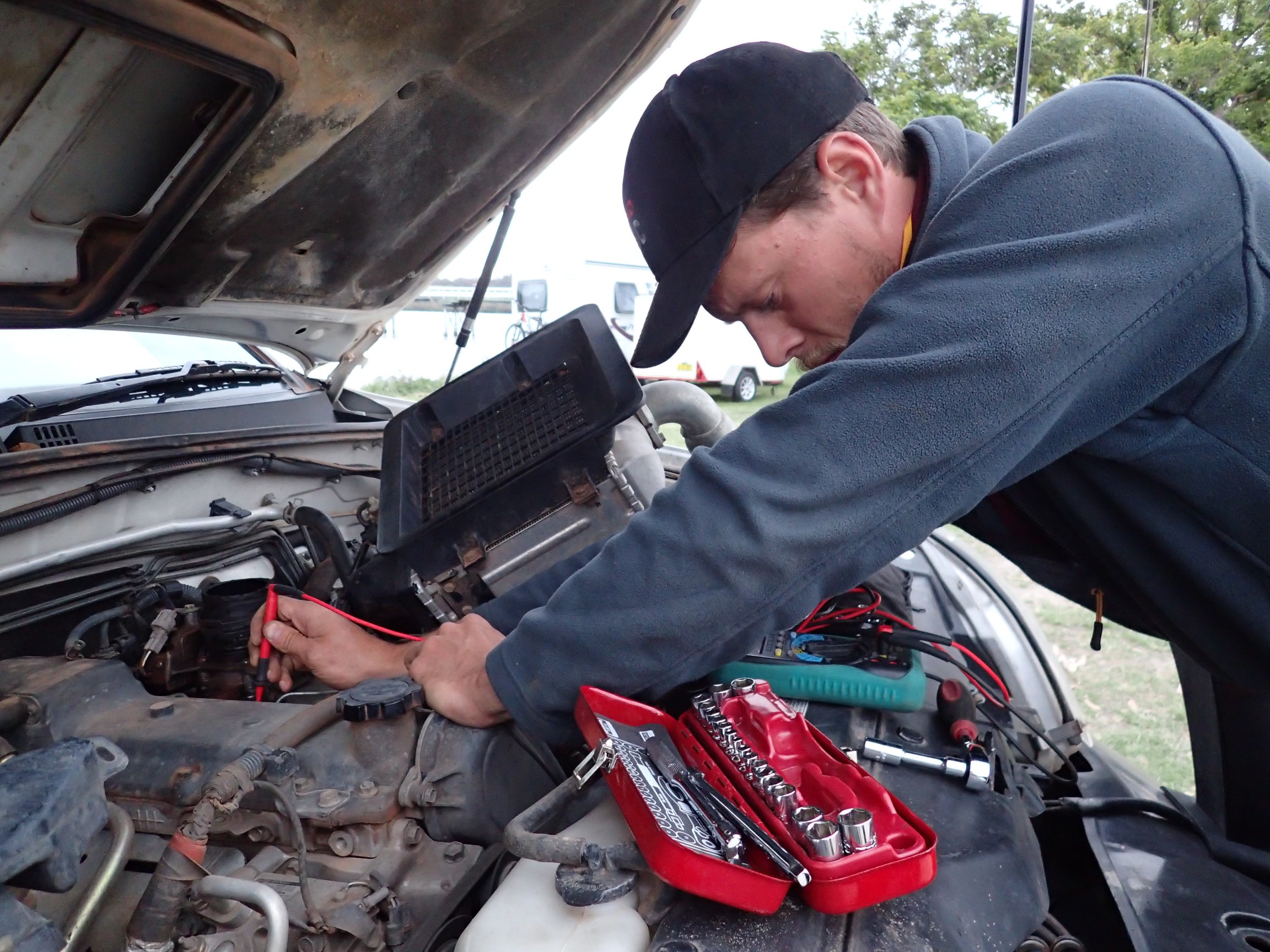To safely tow around Australia you need a reliable vehicle that can go the distance.
Service and maintenance
On average, we serviced our tow rig once a month according to our car’s service manual. This cost us approximately $100 each time, and involved regularly changing the engine, oil, fuel and air filters.
We found it important to grease the tail shaft following river crossings and/or after every 15,000km to ensure all joints were well lubricated. Drew also checked the brake pads for wear and kept a close eye on the radiator fluid.
After each service we visited a local waste transfer station to dispose of engine oil safely and free of charge.
Vehicle inspections
This generally consisted of looking in and under the vehicle for anything amiss and listening for unusual noises while driving.
We also regularly checked nuts and bolts for anything that could shake loose. When travelling on dirt roads we gave the car a thorough look-over on an almost daily basis, and there were many instances where bolts had come loose – such as those on the bull bar, roof racks, aerial, driving lights, exhaust and wheel nuts to name a few!
When issues popped up that were beyond Drew’s mechanical ability, we didn’t hesitate to find a local garage. We relied on professional assistance to complete a wheel alignment part way through the trip, and also to service the handbrake before we embarked on four-wheel driving the Cape York Peninsula.
Important lessons
There are a couple of items that Drew learned were essential to have on hand, and we would recommend everyone have the following accessible in their tow rig.
- Car repair manual specific to your tow rig
One morning in remote north Queensland the car wouldn’t start. By following the repair manual, Drew was able to pull apart the starter motor, clean it and put it back together to get the car running again. Being able to complete this job at the campsite saved us from being stuck in the middle of nowhere, and we avoided the hefty fee of a mechanic in a remote location.
- Volt metre
We used a battery volt metre on several occasions – not only for our own car but also to help other travellers diagnose issues with their batteries.
Learning to service our own tow rig and knowing what to look out for helped us save money and prevent breakdowns on our big lap around Australia.
Want more Young Nomads? Read their next article: Fill your Caravan Pantry on a Budget
Drew and Court are a Melbourne couple who have been traveling around Australia whilst writing about their experiences for Without a Hitch, giving us the real story of life on the road.
Make sure you Sign Up to the Without A Hitch newsletter to keep up to date with Drew & Court on their travels or join the conversation on the Without A Hitch Facebook Page.





